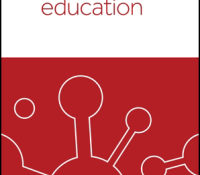tandfonline.com har udgivet en rapport under søgningen “Teacher Education Mathematics”: Abstract Abstract This research seeks to increase the knowledge about the role of language in the teaching of human rights. The specific interest is to examine how language use extends and specifies the human rights learning situation. Drawing on John Dewey’s arguments for two main constituents of an educative language use—the extension of vocabulary and rendering it more precise, observational data from ongoing human rights teaching in six Swedish classes in Years 2–3, 5 and 8 are analysed. The findings show six focal points towards which the language use in the teaching extends the students’ vocabulary and generic understanding of human rights, and three objectives for an increased preciseness in students’ language. The paper highlights differences between the age groups… Continue Reading →
Like this:
Like Loading...
tandfonline.com har udgivet en rapport under søgningen “Teacher Education Mathematics”: Abstract Abstract The right to communicate includes the right to “freedom of opinion and expression” and rights and freedoms “without distinction of … language”. The 70th anniversary of the Universal Declaration of Human Rights is a time to celebrate and reflect on communication as a human right, particularly with respect to Article 19 and its relationship to national and international conventions, declarations, policies and practices. This review profiles articles from the special issue of International Journal of Speech-Language Pathology (volume 20, issue 1) addressing communication rights from four perspectives: (1) communication rights of all people; (2) communication rights of people with communication disabilities; (3) communication rights of children and (4) communication rights relating to language. Divergent perspectives from across the… Continue Reading →
Like this:
Like Loading...
tandfonline.com har udgivet en rapport under søgningen “Teacher Education Mathematics”: ABSTRACT ABSTRACT This article provides a conceptual discussion of ‘ownership’ in various forms of participatory research. The discussion is grounded in our experiences from three research projects in science education. We seek to understand how and why ownership may be distributed between teachers and researchers at different stages in the research process. Looking at our projects in retrospect, we see that ownership was differently distributed at the initial stages. Then ownership distribution followed a similar pathway, as teachers gained ownership of implementation, whereas researchers reclaimed ownership of analyzing and disseminating the work. Our discussion departs from the idea that ownership relates to both ‘risks’ and ‘benefits’ as well as to both ‘rights’ and ‘obligations’. Thereby, we can make visible some… Continue Reading →
Like this:
Like Loading...
sciencedirect.com har udgivet: Highlights • School CCTV surveillance affects both teachers’ and students’ privacy. • Teachers have a professional obligation to protect their students’ rights. • Some teachers consider their own rights while disregarding their students’ rights. • This differential rights consciousness relates to teachers’ low social status. • Understanding differential rights consciousness may assist in shaping PD courses. Abstract This article explores the rights consciousness of teachers as agents having a professional obligation to promote students’ rights. The case study comprises Israeli teachers, whose social status is low, in the context of school CCTV surveillance. Based on 55 interviews, the findings revealed three clusters of perceptions: dismissing students’ privacy as a discrete consideration in assessing school surveillance; acknowledging students’ privacy as a discrete consideration; and merging students’ and teachers’… Continue Reading →
Like this:
Like Loading...


